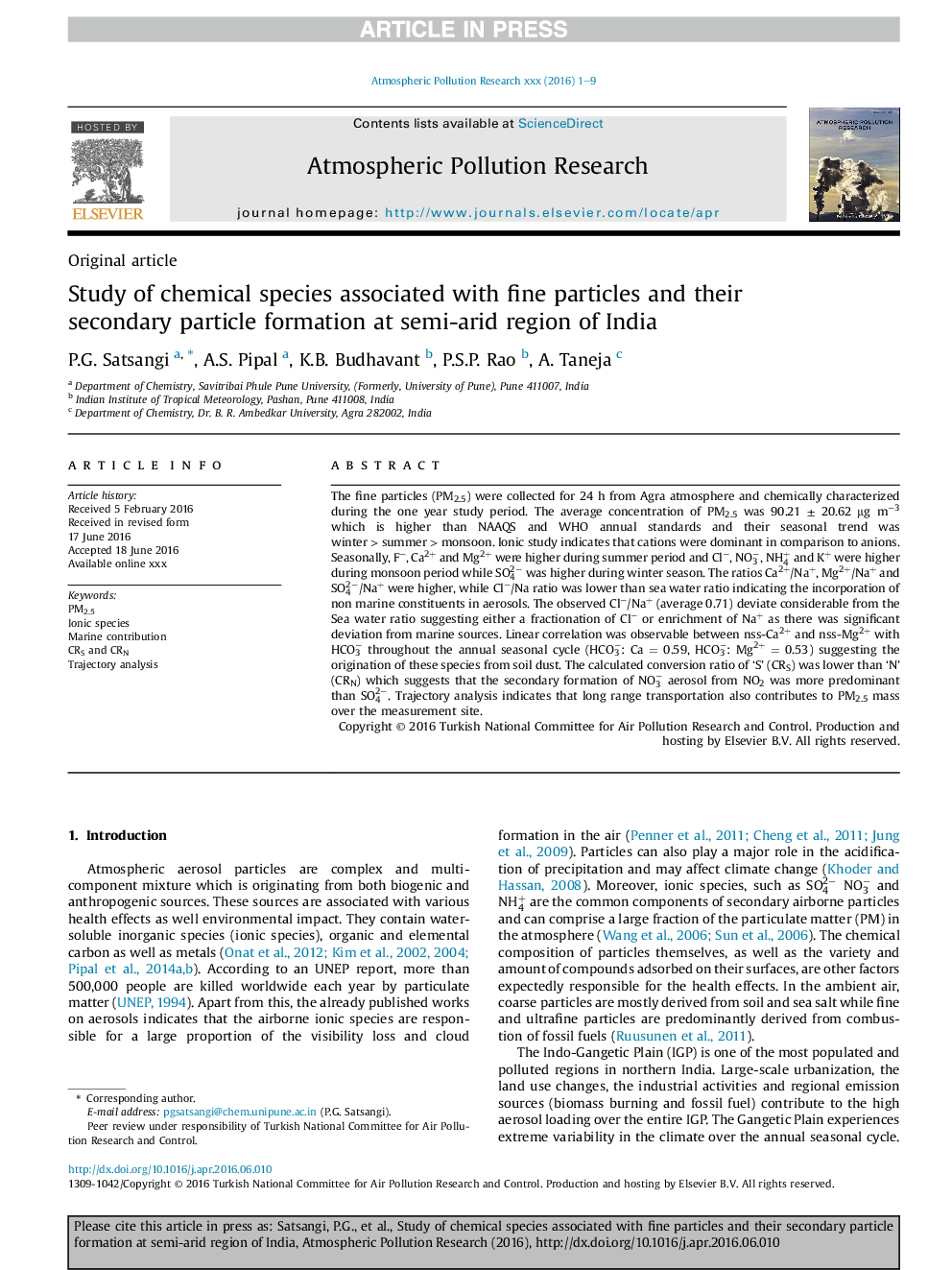| Article ID | Journal | Published Year | Pages | File Type |
|---|---|---|---|---|
| 8862826 | Atmospheric Pollution Research | 2016 | 9 Pages |
Abstract
The fine particles (PM2.5) were collected for 24 h from Agra atmosphere and chemically characterized during the one year study period. The average concentration of PM2.5 was 90.21 ± 20.62 μg mâ3 which is higher than NAAQS and WHO annual standards and their seasonal trend was winter > summer > monsoon. Ionic study indicates that cations were dominant in comparison to anions. Seasonally, Fâ, Ca2+ and Mg2+ were higher during summer period and Clâ, NO3â, NH4+ and K+ were higher during monsoon period while SO42â was higher during winter season. The ratios Ca2+/Na+, Mg2+/Na+ and SO42â/Na+ were higher, while Clâ/Na ratio was lower than sea water ratio indicating the incorporation of non marine constituents in aerosols. The observed Clâ/Na+ (average 0.71) deviate considerable from the Sea water ratio suggesting either a fractionation of Clâ or enrichment of Na+ as there was significant deviation from marine sources. Linear correlation was observable between nss-Ca2+ and nss-Mg2+ with HCO3â throughout the annual seasonal cycle (HCO3â: Ca = 0.59, HCO3â: Mg2+ = 0.53) suggesting the origination of these species from soil dust. The calculated conversion ratio of 'S' (CRS) was lower than 'N' (CRN) which suggests that the secondary formation of NO3â aerosol from NO2 was more predominant than SO42â. Trajectory analysis indicates that long range transportation also contributes to PM2.5 mass over the measurement site.
Related Topics
Physical Sciences and Engineering
Earth and Planetary Sciences
Atmospheric Science
Authors
P.G. Satsangi, A.S. Pipal, K.B. Budhavant, P.S.P. Rao, A. Taneja,
